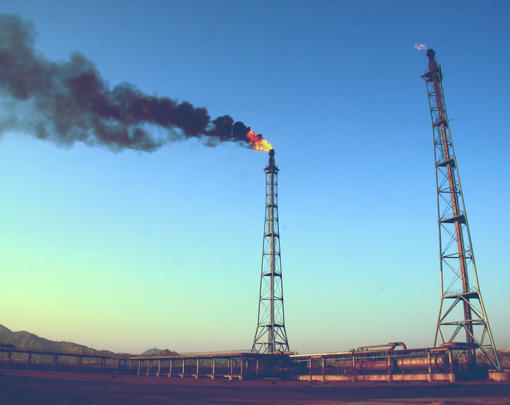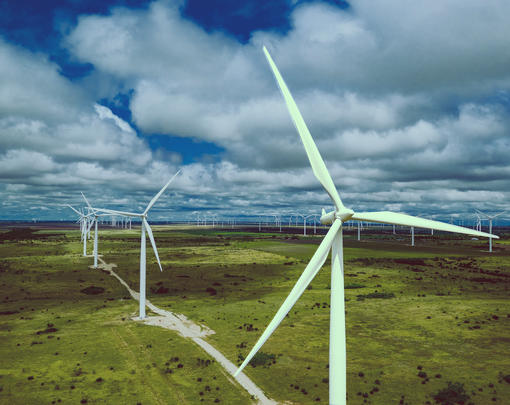When the Global Climate Action Summit convenes in San Francisco on September 12, 2018, one goal will be to affirm that the world beyond the Trumpian miasma is “still in” the Paris Accords. But the Summit seeks also to “demonstrate that stronger commitments are necessary, desirable and achievable.”
This convening is commendable and very important. It is also an opportunity for we, the people, to be crystal clear about what we expect of those in power: these “stronger commitments” must at long last be commitments to actions fully responsive to the desperate situation the world now confronts.
Many climate scientists and others have reached the conclusion that, because we have dithered so long, we now face the prospect of both extreme impacts from global warming and ocean acidification and, eventually, extreme rates of emission reduction. Every year of more procrastination makes both more difficult.
Major climate impacts are now inevitable. Global temperature has already increased by 1°C, with huge consequences. Another 0.5°C is essentially baked in. The odds are that we will easily exceed 2°C global average warming in this century. Right now, we have no means in place to prevent a warming of twice that.
We know what must be done if governments seriously want to halt warming at or below 2°C. Computer models indicate that to meet the goal of staying below 2°C warming, the United States should now be reducing its greenhouse gas (GHG) emissions somewhere between 7 percent and 15 percent a year, every year between now and mid-century. Such sustained declines are unprecedented, and the longer we wait to start, the steeper they must be.
At the now-famous climate conference in Paris in 2015 here is what the dean of climate science, Hans Joachim Schellnhuber, said must be done: “In order to stay below 2°C or even 3°C, we need to have something really disruptive, which I would call an induced implosion of the carbon economy over the next 20-30 years. Otherwise we have no chance of avoiding dangerous, perhaps disastrous, climate change.”
American governments thus face a challenge on the scale of mobilizing to win World War II—perhaps bigger. Unprecedented measures must be put in place both to move completely out of fossil fuels well before mid-century and also to pursue far-reaching and costly adaptation.
For over forty years we have known that avoiding disastrous climate change requires breaking fossil fuel’s hold on our economy and way of life. Decades of debate, negotiations, and actions have fallen short in triggering, never mind managing, an energy transition. In 1976, the year President Carter was elected, the United States relied on fossil fuels for 91 percent of primary energy consumption. In 2016, the year President Trump was elected, the United States was still overwhelmingly dependent on fossil fuels—81 percent. During this 40-year period, there could have been a smooth transition toward an outstanding US climate performance and global leadership in climate action. Instead, those years saw only negligible actual action to reduce US fossil emissions (which went up, not down, during this period) and only modest actions to promote alternatives. This failure of government over these decades is, in my view, the greatest dereliction of civic responsibility in the history of the Republic. And it is worse today than ever.
Tempting as Industrial Revolution thinking may be, purely technological fixes will not be sufficient. We gamely talk about meeting ambitious science-based targets without fully understanding the transformative societal shifts required. So why, it’s high time to ask, despite years of climate advocacy and endless debate and negotiations, are we still losing the effort to save the planet?
The answer, I believe, is that key features of our current system of political economy war successfully against effective climate action. Because our climate crisis is deeply rooted in defining features of today’s political economy, system change is essential. Whatever short-term gains can be made working within the current system, lasting success will require transformations away from the following:
- An unquestioning commitment to economic growth at essentially any cost, including the costs of climate disruption;
- A measure of that growth, GDP, that includes as positives fossil industry growth, the costs of coping with climate change’s effects, and much else;
- Powerful corporate interests whose overriding objective is to generate profit and grow, including profit from avoiding the costs of the climate change they cause;
- Markets that systematically fail to recognize those costs unless corrected by government;
- Government that is both subservient to corporate interests and wedded to GDP growth;
- Runaway consumerism spurred on endlessly by sophisticated advertising and gross disparities in status and lifestyle; and
- Social injustice, economic insecurities, and concentrations of wealth so vast that they paralyze effective political action.
The United States will never be able to go far enough, or fast enough, doing the right things on climate, as long as our systemic priorities are ramping up GDP, growing corporate profits, increasing the incomes of the already well-to-do, neglecting the half of America that is just getting by, feeding runaway consumerism, focusing only on the present moment, facilitating great bastions of corporate power, helping abroad only modestly or not at all, and so on.
Making the needed progress on climate change requires an escape from the fetters of today’s system and an urgent transformation to a new—a next—political economy. (A more detailed account of the principal obstacles to be overcome in this transformation is given below in the preliminary section, “The Systemic Roadblocks to Climate Action.”) So a two-pronged approach is needed—first, rapid deployment of technology and policy measures to reduce GHG emissions and to adapt to changes we cannot forestall. And second, beginning now to seriously change our system of political economy.
Real climate leadership means taking on the root causes of climate change and other societal ills to change the system before we breach critical thresholds in temperature rises. We need to start implementing energy interventions today in key points of the system with the aims of keeping fossil fuels in the ground, rapidly deploying renewable energy and energy efficiency, and changing our political economy to one that is truly just and democratic.
Three groundbreaking and complementary interventions, described below, could start transforming the power structures that promote and enable our problematic energy and economic systems: Quantitative Easing for the Planet charts ways to halt fossil fuel extraction and dissolve entrenched opposition from major fossil fuel companies at the federal level; Public Ownership for Energy Democracy investigates opportunities for putting electricity generation and distribution back into community hands while enhancing democratic governance starting at the local level; An Anchor Strategy for the Energy Transition spells out how large mission-driven energy consumers can help build community systems and local demand for renewable energy sources, jobs, and investments, creating alternatives to today’s extractivist economy.
As developed here by Carla Santos Skandier and Johanna Bozuwa, these interventions work at varying governance levels and are aimed at different points in the energy system:
Quantitative Easing for the Planet
To keep carbon safely in the ground, the government should secure control of fossil fuel reserves by promoting a federal buyout of the top US-based, publicly-traded fossil fuel companies. Ownership could change hands without burdening taxpayers if the Federal Reserve Bank infuses new money through the monetary policy known as quantitative easing. By focusing on major companies in the first links of the fossil fuel supply-chain, the federal government could detach growth- and profit-driven interests from reserves and halt otherwise inevitable extraction. This action might represent our best chance to gain time and unlock a rapid but orderly energy transition, where wealth and benefits are no longer centralized in growth-oriented, undemocratic, and ethically dubious corporations, such as ExxonMobil and Chevron.
Public Ownership for Energy Democracy
Just like extraction companies, largely for-profit energy utilities exercise their political and economic power over their jurisdictions to roll back climate regulation. Transitioning energy utilities to public ownership could help dismantle barriers imposed by the current for-profit, fossil-fuel-based utility paradigm and catalyze the redesign of power generation and distribution. A movement could simultaneously harness the opportunity for more democratic engagement in public utilities to champion and accelerate energy democracy, while also taking for-profit utilities into community hands to reorient their focus towards the public good. A publicly-owned utility system operating throughout states and municipalities has the potential to reinforce and usher in renewable energy use, deep democracy, and wealth redistribution.
An Anchor Strategy for the Energy Transition
Anchor institutions are positioned to be a prime ally in enabling the energy transition at the local level. As large nonprofit or public institutions, like universities or hospitals, anchors’ broader social mission roots them to a place and keeps them from abandoning local communities. To fully embrace their mission, anchors could align their power to rise to the energy challenge in three important ways: by furthering community-centered energy grids through community renewable energy projects, energy efficiency initiatives, and microgrids; by building a workforce compatible with a 1.5° Celsius society through education, training, and other programs that facilitate a just transition for affected and future workers; and by convening the financial capacity needed to support the transition and to overcome corporate bias in financial systems.
Together, these three energy solutions can contribute to meaningful progress in addressing the climate crisis while helping to lay the foundation for a new political economy. Based on interventions throughout the energy supply chain—extraction, generation, distribution, and demand—and presenting opportunities at all governance levels—federal, regional, and local—these complementary pathways combined would lead to practical results and also bring hope that sustainability, democracy, and equitability can become our common ground.





